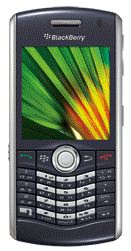 The jockeying for position is over. It’s time for the U.S. carriers, the world’s handset manufacturers, and third-party application developers to innovate the mobile wireless future.
The jockeying for position is over. It’s time for the U.S. carriers, the world’s handset manufacturers, and third-party application developers to innovate the mobile wireless future.
Today the U.S. Federal Communications Commission announced that the big winners in the 700 MHz wireless spectrum auction were, indeed, Verizon and AT&T, the two biggest players in the industry.
Verizon won the coveted C-block for $4.74 billion, besting Google’s bid of $4.71 billion. Going into the spectrum bid, which began at the end of January, many industry followers had hoped that Google would take its bid seriously as a way to shake up a stagnant industry.
 Google committed to bidding the minimum of $4.66 billion, which triggered a rule that the winner of the 700 MHz C-block spectrum would have to open its network to any device, any application. Just by bidding, Google dictated the new rules of the game — rules that Verizon must now follow.
Google committed to bidding the minimum of $4.66 billion, which triggered a rule that the winner of the 700 MHz C-block spectrum would have to open its network to any device, any application. Just by bidding, Google dictated the new rules of the game — rules that Verizon must now follow.
 AT&T won 227 regional licenses around the U.S. Those licenses, along with the piece of the 700 MHz puzzle it already owned, allows AT&T to further enhance the quality and reliability of its existing network and wireless broadband.
AT&T won 227 regional licenses around the U.S. Those licenses, along with the piece of the 700 MHz puzzle it already owned, allows AT&T to further enhance the quality and reliability of its existing network and wireless broadband.
“It means that the two big guys just got much bigger,” Rebecca Arbogast, an analyst with Stifel Nicolaus, told Reuters.
It also means that the jockeying for position is now officially over. The remainder of 2008 will be for the carriers, handset manufacturers, and application developers to introduce their initial products — and you can bet these will be far from perfect. There will be missteps, misfirings, false starts, claims of so-and-so being unfair, buggy software, crappy hardware, and disappointment, but these are the growing pains of an industry in transition
2009 is still the Year of Wireless.
For now, with the auction over, here’s how the U.S. wireless industry shapes up for the remainder of 2008.
The Carriers
 AT&T already operates on the GSM network, so by definition its network is mostly open. AT&T’s challenge will be improving its wireless broadband, particularly because iPhone owners (AT&T is the sole iPhone provider in the U.S.) are gobbling up huge amounts of bandwidth. Its EDGE network is outdated, slow, and in need of an overhaul.
AT&T already operates on the GSM network, so by definition its network is mostly open. AT&T’s challenge will be improving its wireless broadband, particularly because iPhone owners (AT&T is the sole iPhone provider in the U.S.) are gobbling up huge amounts of bandwidth. Its EDGE network is outdated, slow, and in need of an overhaul.
Verizon has a great deal of work ahead of it, too. Verizon’s network is built on CDMA technology, which is prominent in the U.S. but not worldwide. Consumers will not be able to buy a GSM phone overseas and expect it to work on the Verizon network in the U.S.
On Wednesday Verizon held its first Open Development Initiative event in New York, where several hundred attendees from companies such as Samsung and Cisco Systems met to listen to Verizon outline its technical specifications and best practices for devices created to run on its network. (For more details, read coverage from Forbes and The New York Times.) Who knows that kinds of phones will be created to run on Verizon’s network.
It’s clear that AT&T and Verizon, the Nos. 1 and 2 carriers, respectively, are hellbent to stay ahead of not only Google but two other large carriers in the U.S., Sprint Nextel and T-Mobile. AT&T and Verizon are saddled with creating reliable, super-fast, voice and data networks that will be the backbone for the coming wireless revolution.
The Handset Manufacturers
Apple clearly woke up the wireless industry and handset manufacturers with the introduction of the iPhone, but Apple is going to face a rush of competition that’s pissed off, wide awake, and going to counter-punch with a vengeance.
The debut of iPhone 2.0, due anytime from June to September, may not be enough to hold off the challengers if all it brings is faster 3G network capabilities. What new hardware tricks will Apple introduce — a better camera, video recording capabilities, handheld gaming, a content creator for new media, a true enterprise phone, an even slicker user interface?
Google isn’t manufacturing the so-called G-phone, per se, but handset manufacturers around the world (including LG, Samsung, and others) will introduce devices running the Google mobile operating system Android. How will Android and the coming Gphone hardware affect the mobile industry?

With the involvement of Apple and Google, until recently outsiders to the wireless industry, Nokia, Research in Motion (BlackBerry), Samsung, Motorola, Sony Ericsson, LG, and others will need to respond with innovative offerings of their own that take advantage of new networks and open applications.
Nokia, the No. 1 handset manufacturer in the world, already has a promising lineup of phones and an ever-expanding, differentiating set of services. RIM, which holds a commanding lead in the smartphone market, is being threatened in both the enterprise and consumer markets.
And then there’s Microsoft, which, like Google, does not manufacture wireless handsets. However, Microsoft’s Windows Mobile operating system has been licensed to 11 million phones worldwide in 2007 (manufactured by the likes of Samsung, Sony Ericsson, and Motorola) and Microsoft will not want to see its market share eroded by the likes of Apple and Google.
In the end, do not expect Nokia, RIM, Samsung, Sony Ericsson, Microsoft, and others to sit by, idly watching Apple and Google change the mobile industry.
The Developers
 This is where the real battle will be fought for the future of the U.S. mobile industry.
This is where the real battle will be fought for the future of the U.S. mobile industry.
The carriers will provide the backbone and infrastructure. The handset manufacturers will provide the vehicles to run on the carrier networks. But it will be the developers, both corporate and third-party, who will bring new and exciting functionality to the mobile industry.
Consumers, not the enterprise, are the ones gravitating to the iPhone, the BlackBerry Pearl, and other smart phones. They’re the ones who will turn communications devices into information appliances so they can do what they want with them — truly surf the Web (better than they can now with the iPhone), easily create and share content, work seamlessly between home and the enterprise (work), track their to do lists, record medical histories, order from Amazon, watch eBay auctions, keep up with friends on MySpace and Facebook and colleagues on LinkedIn … whatever.
What will the developers come up with using Android? And how will these applications work with new hardware on any network?
What will the developers come up with using the iPhone software developer’s kit (SDK), which was recently released?

What will the developers come up with for Nokia, which is positioning itself slightly differently than Apple and Google? Same for RIM and the BlackBerry. How will developers innovate between the enterprise and the consumer worlds?
What will developers do for Verizon? There’s the hardware compliance issue, important to be sure, but there will need to be interesting, competitive applications to run on a new, open network. What will these be?
And, finally, what will developers do at and for Microsoft? How will they improve Windows Mobile, an operating system that’s passable but ultimately disappointing and hard to use? Windows Mobile for years has enjoyed more market share than rival Palm, but Palm no longer matters. Apple and Google does.
Conclusion
The winner of the 700 MHz wireless spectrum auction may have been announced today, closing one “competition.” But the race to reinvent the U.S. wireless industry is now underway full tilt boogie.
